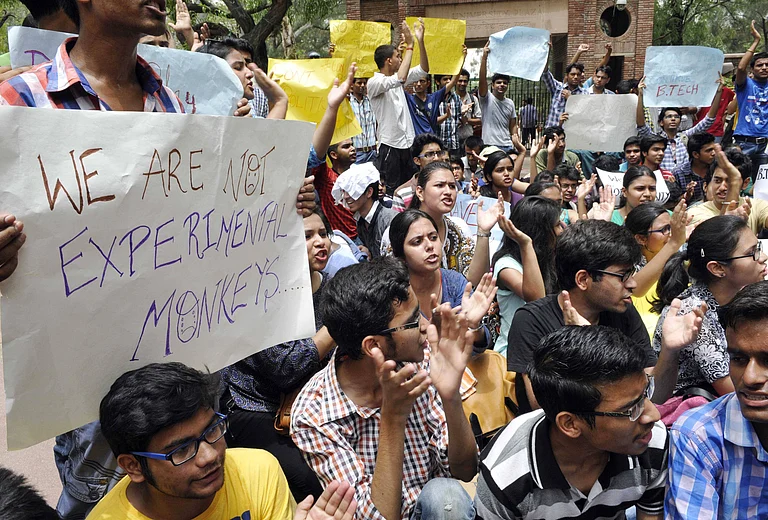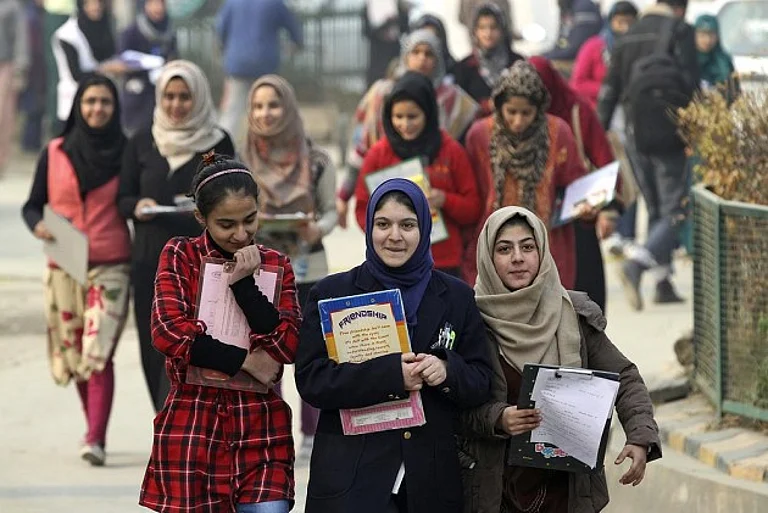India’s higher education sector stands at a crucial juncture, caught between the swelling aspirations of its youth and the structural limitations of state capacity. With 43.3 million students enrolled as of 2021-22, and millions more expected in the coming years, the pressure to scale quality education is immense. In this context, privatisation is no longer a peripheral debate. It is central to the architecture of India’s knowledge economy. For the government, this is not a question of ideology; it is a practical and strategic choice, driven by demographic urgency and fiscal realism.
The National Education Policy (NEP) 2020 envisions increasing the Gross Enrolment Ratio (GER) in higher education to 50 percent by 2035. But as of 2021–22, India’s GER stands at 28.4 percent. Distance education now constitutes 11.5 percent of all enrolments, indicating an appetite for scale beyond traditional institutions. Yet public universities alone cannot bridge this widening demand-supply gap. Out of 1,168 universities across the country, 473 are private unaided, comprising nearly 40.5 percent, while over 65.3 percent of colleges are privately run without government aid. These institutions have absorbed the majority of enrolment growth outside the public system, structurally filling a space the state has struggled to expand.
This shift is not a break from India’s educational heritage. It is a reaffirmation of it. For millennia, India has thrived on Anekāntavāda, a philosophical ethos that embraces multiplicity and plural approaches. Historically, knowledge systems flourished not under the monopoly of a centralised state but through societal participation. Merchant guilds, lay communities, and religious institutions like the Buddhist Sangha and Jain orders supported centres of learning across the subcontinent. Even in the colonial and early post-independence periods, pioneers like Mahatma Phule and Savitribai Phule relied on community support to establish schools that widened access for women and marginalised groups.
India’s higher education balances public goals and private grit, scaling quality amid rising demand and fiscal constraints
This history reminds us that education in India has rarely been the sole responsibility of the state. Rather, it has thrived when treated as a shared societal enterprise. Today’s rise of private universities is not a rupture from this legacy but a continuation of it, an echo of India’s long-standing tradition of plural institution-building. Private participation, far from undermining public purpose, has become essential to realising it.
Privatisation and liberalisation have been repeatedly acknowledged by the government as tools to drive economic progress, provided they are harnessed with regulatory safeguards and inclusive intent. These forces have helped institutions raise academic standards, invest in research infrastructure, and align with global benchmarks. Many private universities today are serious contenders on the world stage. Private deemed universities now contribute significantly to national research output, almost on par with the IITs. Their rising presence in national and international rankings reflects strategic investments in faculty, pedagogy, and global collaboration.
This transformation is not accidental. It reflects both a rapidly growing student population and a fiscal environment that limits the pace at which public institutions alone can expand. From 2013–14 to 2024–25, the central budget’s allocation for higher education saw sharp fluctuations. The 2024–25 revised estimate stood at `57,244 crore, only to be cut to `47,620 crore in the final Budget. In 2025–26, funding has been modestly increased to `50,000 crore, a figure effectively neutralised by inflation. In real terms, public spending has remained flat.
Private universities echo India’s plural learning legacy, driving access and innovation alongside public institutions
Critics of privatisation often raise concerns about equity, access, and affordability. These are not unfounded. But the government has not abdicated its constitutional responsibility. Instead, it has adopted a two-pronged approach. On one side, targeted schemes like RUSA and the NEP’s emphasis on inclusion continue to bolster public institutions, especially for first-generation learners. On the other, policy frameworks ensure that private players operate within a rigorous ecosystem of accreditation, graded autonomy, and quality assurance.
Tools like HEFA loans have enabled infrastructure investment, while reforms like multidisciplinary mandates and outcome-based education models have pushed private universities toward innovation. Even contentious issues like reservations and rural access are being addressed not by resisting private participation, but by shaping it. The recent push for national digital universities, online degree programs, and open learning platforms further underscores the state’s intention to expand the ecosystem without being its sole provider.
India’s higher education is entering a phase where cooperation must replace contest. Public institutions will continue to serve as the backbone of equitable access. Private universities, if guided by clear regulation and a spirit of public-mindedness, can be powerful engines of scale and innovation. The real task ahead is to bridge the two through oversight that is firm but enabling, and through policies that encourage both quality and reach.
As India looks to 2047, the goal is not merely to increase enrolment but to build institutions that reflect the country’s diversity, uphold academic integrity, and commit to inclusion as much as to innovation. The challenge is formidable, but not insurmountable. The opportunity, however, is historic. If steered wisely, India’s higher education ecosystem could offer not only degrees, but dignity — and with it, the promise of transformation at scale.
MORE FROM THIS ISSUE
Author: Malika Pandey is a public policy professional with years of experience working across key ministries of the Government of India.



























